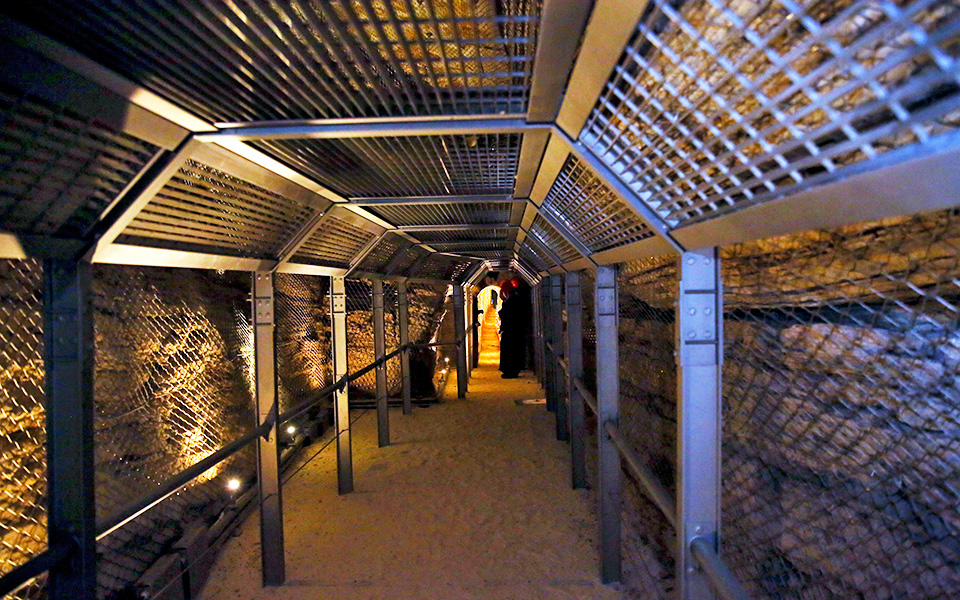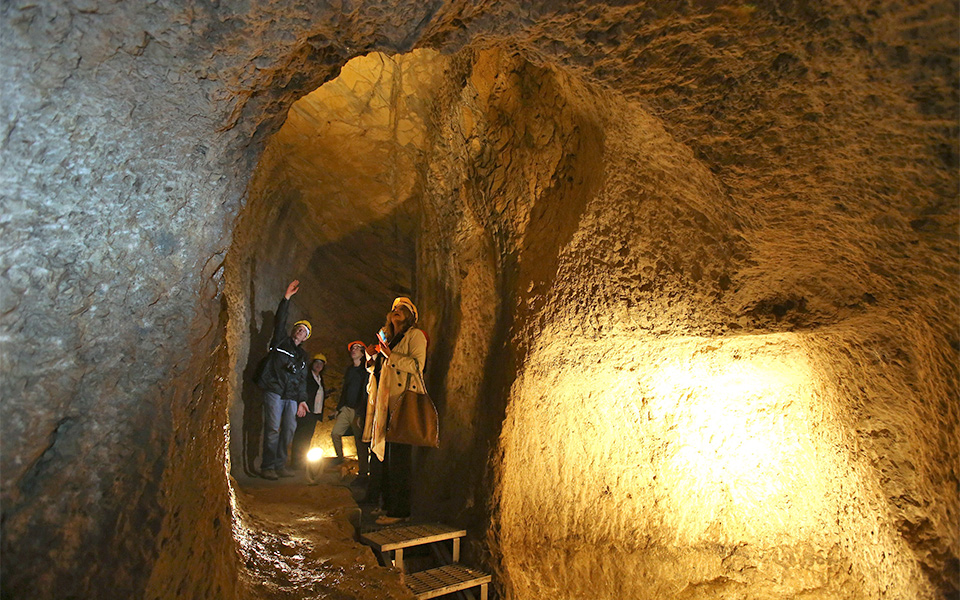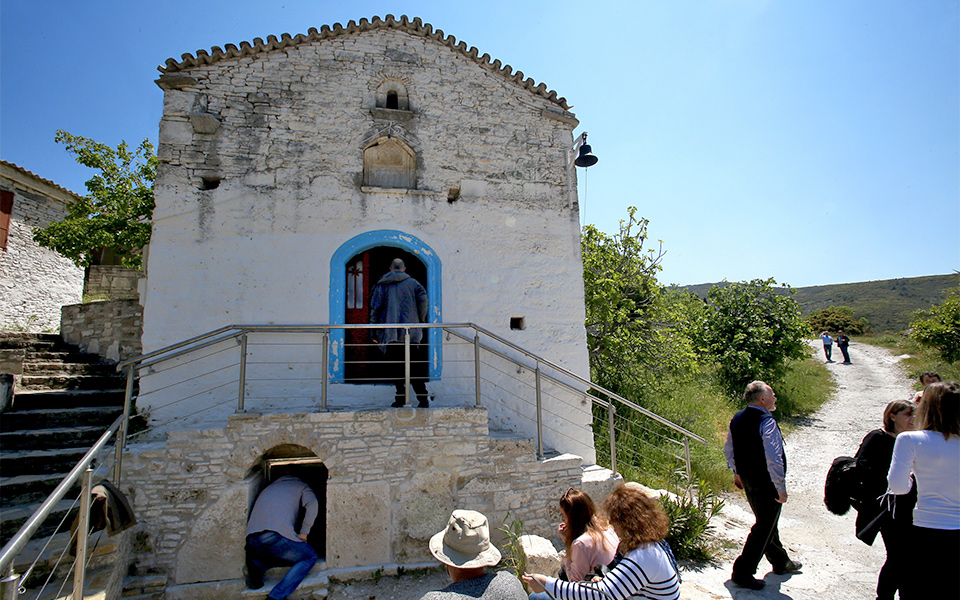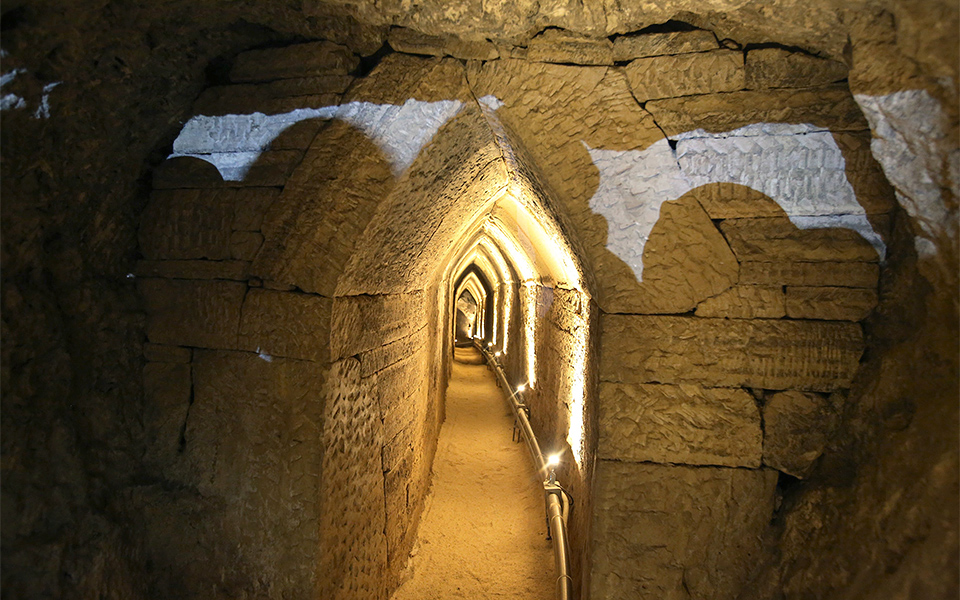In many places, the floor was muddy. Water dripped from the ceiling and down my jacket. I walked over a trench that was more than 9 meters deep. My (fortunately helmeted) head bumped against the rocks a number of times. But all of this bothered me little, as a visit to the newly restored Eupalinian Aqueduct on Samos is truly special, and all of the above form part of the experience.
The aqueduct was designed in the mid 6th century BCE by the great architect and civil engineer Eupalinos of Megara to serve the needs of the ancient city-state of Samos, which was located at the site of modern-day town of Pythagorion. Its construction was ordered by the tyrant Polycrates who (the ruler of Samos from 538-522 BCE) and its middle section remains ‘alive’ to this day. Described by the ancient Greek historian Herodotus as the 8th wonder of the ancient world the aqueduct is no doubt one of the finest achievements of ancient civil engineering.
Now a new generation of visitors to Samos will be able to see this great work for themselves; following a lengthy and complex project to restore, maintain and exhibit the aqueduct, as of May it will be open to the public, once the Central Archaeological Council issues the required permit. he restoration work took 3 years to complete and cost a total of 3.1 million euros. Thanks to this work visitors can now walk the entire length of the 1,036m tunnel.

© EPA / Simela Pantzartzi
Journalists and local dignitaries were recently invited to see the newly restored Eupalian Aqueduct at an event addressed by Culture Minister Lydia Koniordou and representatives of the team responsible for carrying out the work. “Enter the tunnel, feel the energy of the mountain and listen to all that it has to tell you ,” Ms Koniordou said, describing the site as a ‘jewel’ for the island, and one that would help attract tourists to Samos.
“The Eupalian Aqueduct is not just an impressive technical achievement. It reveals layers of thought and reflection, and that is the what sets the experience it offers apart,” local MP Dimitris Sevastakis said. For his part, Dimosthenis Svolopoulos, Head of the Office of Ancient Monument Restoration at the Culture Ministry said that the work completed was, “worthy of the importance of the monument and the glory of ancient Samos.”
Indeed Samos’s glory in the 6th century BCE is unquestioned. Trade and shipping had provided the city-state with great wealth and triggered a cultural blossoming. The residents were only lacking easy access to one basic need: water. Thus Polycrates ordered the architect Eupalinos to direct water from the rich spring of Agiades on Mount Ambelos to the settlement.
This task was close to impossible as, standing between the town and the spring stood the mountain itself. And yet, the brilliant civil engineer, using simple measuring equipment and complex mathematics decided to create a tunnel from both sides of the mountain at the same time to speed up the process, a fact that impressed the well-traveled Herodotus.

© EPA / Simela Pantzartzi

© EPA / Simela Pantzartzi
Two crews using hammers and chisels carved the tunnel through the hard limestone and met in the middle of the kilometer long, 1.80m x 1.80m tunnel with very little deviation. The entire project was a significant drain on Samos’s treasury, requiring 8-10 years to complete, the excavation of 12.500 tons of rock and 5,000 sections of clay pipe. But once finally completed, abundant fresh water began to flow through the city’s fountains. The aqueduct continued to operate for a stunning 1,100 years.
In the Byzantine era the tunnel was also used as a shelter by residents during raids on the island. It later fell into disuse and was abandoned.
In the 1970s the aqueduct was uncovered by the German Archaeological Institute, after which for safety reasons visitors could only visit the first 130 meters.
With the recent work the tunnel has been shored up against collapse, the stone lining has been maintained, protected walkways have been constructed, lighting installed and the entry and exit points have been renovated.
Much remains to be done and the Culture Ministry has spoken about creating a ‘holistic strategy’ to promote the aqueduct. Such a strategy, if it is indeed implemented, would help ensure that the aqueduct that provided Samos with clean water for over 1000 years, will continue to bring life to the island.
This article was first published by Kathimerini newspaper on 25/04/2017












